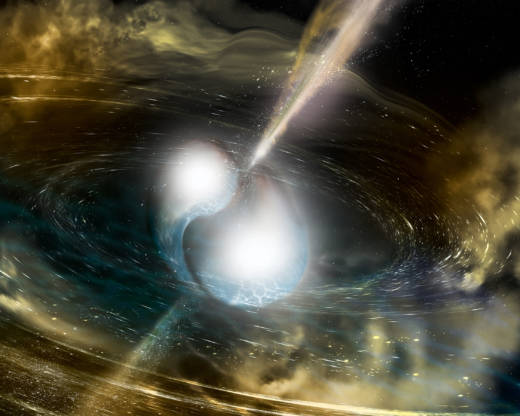Far, far away, 130 million years ago, in a galaxy nestled in the Hydra constellation, a violent explosion of two collapsed stars merging into one sent a burst of gamma rays searing across the cosmos and sent shockwaves through the fabric of the universe.
It has also sent shockwaves of excitement through the field of astrophysics, demonstrating a new way to study the heavens.
It took until August 17 for these signals to reach Earth, where, at 8:41 a.m. Eastern time, a team of gravitational wave astronomers observed them with the LIGO and Virgo detectors. Less than two seconds later, NASA’s Fermi Space Telescope observed a quick flash of gamma radiation, long theorized to be associated with merging neutron stars. The LIGO and Virgo team was able to pinpoint where the signals were coming from and put dozens of observatories around the globe on alert to look for signals of cosmic upheaval.
In his office at University of California, Santa Cruz, postdoctoral researcher Charles Kilpatrick was the first to locate it. Scanning images from his team’s telescope in Chile, he saw — beside a galaxy known as NGC 4993 — a tiny dot that had not been there before.
Kilpatrick will enter the history books as the first known human to see photons from a neutron star collision. Speaking to the California Report’s John Sepulvado, Kilpatrick says it looked like any other star at first. Further analysis revealed it was kind of blue.
